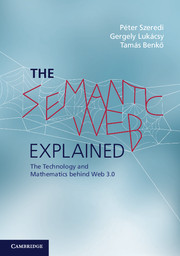7 - The SHIQ tableau algorithm
Published online by Cambridge University Press: 05 August 2014
Summary
In this chapter we present a variant of the tableau algorithm that can accommodate the SHIQ language. We first summarise the elements of the tableau reasoning that have been introduced so far. Next, we discuss the techniques to support each new construct of the SHIQ language: transitivity, role hierarchy, inverse roles, functional restrictions and qualified number restrictions. Finally we describe the full SHIQ tableau algorithm, first only for TBox inference and then for reasoning over ABoxes and TBoxes together. The chapter is concluded with a discussion of optimisation techniques for the SHIQ tableau algorithm.
The discussion follows the papers [63, 60], although parts of the formalism have been simplified. Detailed proofs of the properties of the algorithm can also be found there.
An outline of the SHIQ tableau algorithm
First we reiterate the main characteristics of the ALCN tableau algorithm with respect to a possibly non-empty TBox (see Section 5.4). The purpose of this discussion is to highlight the most important features that will be reused in the SHIQ algorithm.
(1) The goal of the tableau algorithm is to decide whether a root concept C0 is satisfiable w.r.t. a (possibly empty) TBox T. To make the following discussion simpler, we will often omit the reference to the TBox.
(2) […]
Information
- Type
- Chapter
- Information
- The Semantic Web ExplainedThe Technology and Mathematics behind Web 3.0, pp. 346 - 404Publisher: Cambridge University PressPrint publication year: 2014
